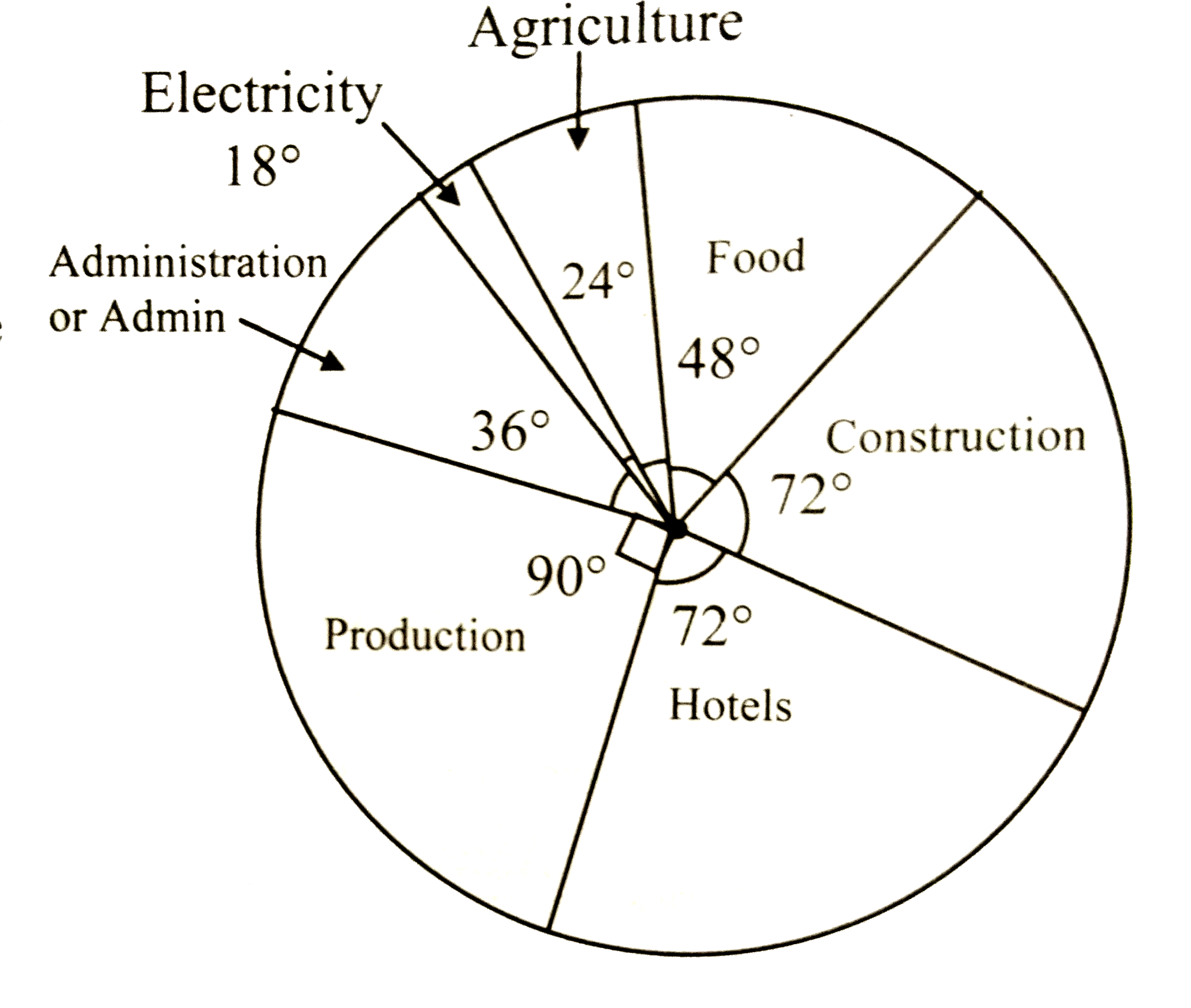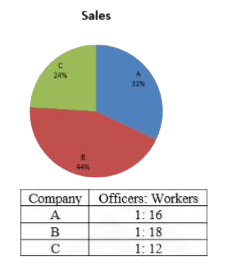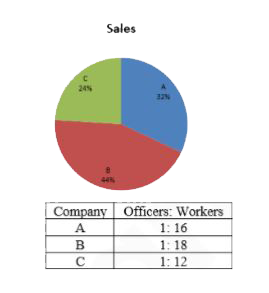The percentages of various categories of workers in a state are given in the following table. Categories, Cultivators, Agricultural Labourers, Industrial Workers, Commercial Workers, Others % of workers, 40, 25, 12.5, 10, 12.5 Present the information in the form a pie-chart.
To present the information about the various categories of workers in a state in the form of a pie chart, we will follow these steps:
Step 1: List the Categories and Their Percentages
We have the following categories of workers along with their respective percentages:
- Cultivators: 40%
- Agricultural Labourers: 25%
- Industrial Workers: 12.5%
- Commercial Workers: 10%
- Others: 12.5%
Step 2: Convert Percentages to Angles
To convert the percentages into angles for the pie chart, we use the formula:
Angle=(Percentage100)×360
Now we will calculate the angles for each category:
1. Cultivators:
Angle=(40100)×360=144∘
2. Agricultural Labourers:
Angle=(25100)×360=90∘
3. Industrial Workers:
Angle=(12.5100)×360=45∘
4. Commercial Workers:
Angle=(10100)×360=36∘
5. Others:
Angle=(12.5100)×360=45∘
Step 3: Summarize the Angles
Now we summarize the angles calculated:
- Cultivators: 144°
- Agricultural Labourers: 90°
- Industrial Workers: 45°
- Commercial Workers: 36°
- Others: 45°
Step 4: Draw the Pie Chart
To draw the pie chart:
1. Start by drawing a circle.
2. From the center of the circle, draw a line to represent the first category (Cultivators) at 144°.
3. Next, draw another line for Agricultural Labourers at 90°.
4. Continue drawing lines for Industrial Workers (45°), Commercial Workers (36°), and Others (45°).
5. Label each section with the category name and percentage.
Final Pie Chart
The pie chart will visually represent the distribution of workers in each category based on the angles calculated.
---
We have the following categories of workers along with their respective percentages:
- Cultivators: 40%
- Agricultural Labourers: 25%
- Industrial Workers: 12.5%
- Commercial Workers: 10%
- Others: 12.5%
To convert the percentages into angles for the pie chart, we use the formula:
Angle=(Percentage100)×360
Angle=(40100)×360=144∘
Angle=(25100)×360=90∘
Angle=(12.5100)×360=45∘
Angle=(10100)×360=36∘
Angle=(12.5100)×360=45∘
Now we summarize the angles calculated:
- Cultivators: 144°
- Agricultural Labourers: 90°
- Industrial Workers: 45°
- Commercial Workers: 36°
- Others: 45°
To draw the pie chart:
1. Start by drawing a circle.
2. From the center of the circle, draw a line to represent the first category (Cultivators) at 144°.
3. Next, draw another line for Agricultural Labourers at 90°.
4. Continue drawing lines for Industrial Workers (45°), Commercial Workers (36°), and Others (45°).
5. Label each section with the category name and percentage.
The pie chart will visually represent the distribution of workers in each category based on the angles calculated.
Topper's Solved these Questions
Similar Questions
The following table shows the expenditure incurred by a publisher in publishing a book: Items, Paper, Printing, Binding, Advertishing, Misc. Expenditure (in %), 35%, 20%, 10%, 5%, 30% Present the above data in the form of a pie-chart.
View SolutionThe pie diagram in the given figure shows the proportions of different workers in a town. Answer the following questions with its help.
i. If the total workers is 10000, how many of them are in the field of construction?
ii. How many workers are working in the administration?
iii. What is the percentage of workers in production

View Solution
Knowledge Check
Comprehension:
Read the passage and answer the questions given below it.
Construction and trade are the two sectors that share a dominant part of informal employment with 76 per cent and 72 per cent respectively of all the workers in the non-agriculture, informal sector. Nearly 25 per cent of India's urban employment is dominated by four informal trades: domestic workers, home-based workers, street vendors, and waste pickers. Over 90 per cent of workers in India are in the informal segment, which gives a significant share to the economy. More than 90 per cent of women workers are employed in the informal sector. Some of the reasons for this could be the flexibility of time and work in the home-based units. Further, women are employed more in the informal sector because they are considered to be a cheap source of labour. However, the informal sector does not guarantee economic security, legal protection, equal and fair wages and workers' rights. The workers in this sector therefore land in a very vulnerable situations as the labour legislation or trade union organisation cannot reach there.
What is the percentage of women workers in the informal sector?Aabout 72Bless than 25Cless than 76Dmore than 90Comprehension:
Read the passage and answer the questions given below it.
Construction and trade are the two sectors that share a dominant part of informal employment with 76 per cent and 72 per cent respectively of all the workers in the non-agriculture, informal sector. Nearly 25 per cent of India's urban employment is dominated by four informal trades: domestic workers, home-based workers, street vendors, and waste pickers. Over 90 per cent of workers in India are in the informal segment, which gives a significant share to the economy. More than 90 per cent of women workers are employed in the informal sector. Some of the reasons for this could be the flexibility of time and work in the home-based units. Further, women are employed more in the informal sector because they are considered to be a cheap source of labour. However, the informal sector does not guarantee economic security, legal protection, equal and fair wages and workers' rights. The workers in this sector therefore land in a very vulnerable situations as the labour legislation or trade union organisation cannot reach there.
Which one of the following is NOT a reason why more women are found in the informal sector?Aflexible timeBgreater demandCflexible workDhigher wageComprehension:
Read the passage and answer the questions given below it.
Construction and trade are the two sectors that share a dominant part of informal employment with 76 per cent and 72 per cent respectively of all the workers in the non-agriculture, informal sector. Nearly 25 per cent of India's urban employment is dominated by four informal trades: domestic workers, home-based workers, street vendors, and waste pickers. Over 90 per cent of workers in India are in the informal segment, which gives a significant share to the economy. More than 90 per cent of women workers are employed in the informal sector. Some of the reasons for this could be the flexibility of time and work in the home-based units. Further, women are employed more in the informal sector because they are considered to be a cheap source of labour. However, the informal sector does not guarantee economic security, legal protection, equal and fair wages and workers' rights. The workers in this sector therefore land in a very vulnerable situations as the labour legislation or trade union organisation cannot reach there.
The greatest disadvantage of the informal sector is that ______.Ait pays lower and unequal salaries.Bworkers do not get security of work.Cit has fewer opportunities for movementDlabour legislation does not reach workers.
The pie diagram in figure, shows the proportions of different workers in a town. Answer the following questions with its help .

(1) If the total number of workers is 10,000, how many of them are in the field of construction ?
(2) How many workers are working in the administration ?
(3) What is the percentage of workers in the production ?
View SolutionPie chart given below shows total number of workers in three different companies. Table given below shows ratio between officers and workers working in these companies. Study the data carefully and answer the following questions . total workers = 900

Note: total employees = officers + workers
Total number of employees in company ‘B’ is how much more than total number of employees in company ‘C’.
View SolutionPie chart given below shows total number of workers in three different companies. Table given below shows ratio between officers and workers working in these companies. Study the data carefully and answer the following questions
Total workers =900

Note: total employees = officers + workers
Find the difference between total number of workers in company ‘A’ and total number of workers in company ‘B’ and ‘C’ together?
View SolutionComprehension:
Read the passage and answer the questions given below it.
Construction and trade are the two sectors that share a dominant part of informal employment with 76 per cent and 72 per cent respectively of all the workers in the non-agriculture, informal sector. Nearly 25 per cent of India's urban employment is dominated by four informal trades: domestic workers, home-based workers, street vendors, and waste pickers. Over 90 per cent of workers in India are in the informal segment, which gives a significant share to the economy. More than 90 per cent of women workers are employed in the informal sector. Some of the reasons for this could be the flexibility of time and work in the home-based units. Further, women are employed more in the informal sector because they are considered to be a cheap source of labour. However, the informal sector does not guarantee economic security, legal protection, equal and fair wages and workers' rights. The workers in this sector therefore land in a very vulnerable situations as the labour legislation or trade union organisation cannot reach there.
Which sectors have the largest share of informal employment?
View SolutionComprehension:
Read the passage and answer the questions given below it.
Construction and trade are the two sectors that share a dominant part of informal employment with 76 per cent and 72 per cent respectively of all the workers in the non-agriculture, informal sector. Nearly 25 per cent of India's urban employment is dominated by four informal trades: domestic workers, home-based workers, street vendors, and waste pickers. Over 90 per cent of workers in India are in the informal segment, which gives a significant share to the economy. More than 90 per cent of women workers are employed in the informal sector. Some of the reasons for this could be the flexibility of time and work in the home-based units. Further, women are employed more in the informal sector because they are considered to be a cheap source of labour. However, the informal sector does not guarantee economic security, legal protection, equal and fair wages and workers' rights. The workers in this sector therefore land in a very vulnerable situations as the labour legislation or trade union organisation cannot reach there.
Which statement is NOT true according to the passage?
View Solution
